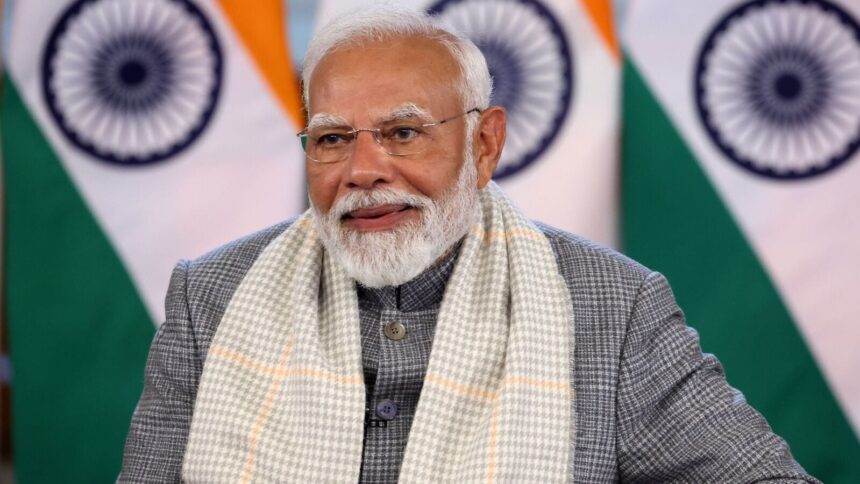MUMBAI
:
This week, Prime Minister Narendra Modi is set to meet with US President Donald Trump at the White House for discussions centered around trade, immigration, defense, and energy collaboration. Mint analyzes the significance of this visit in addressing India-specific tariffs and enhancing the Indo-US bilateral partnership.
How perfectly timed is PM Modi’s visit to the US?
Modi will be among the first global leaders to engage with President Trump in his second term. His trip to the US follows visits by Israeli Prime Minister Benjamin Netanyahu and Japanese Prime Minister Shigeru Ishiba, underscoring the increasing prominence of the Indo-US relationship. The visit offers Modi a platform to detail India’s recent initiatives aimed at lowering import duties on US exports along with future plans to diminish the trade deficit through defense and energy agreements. Such efforts could help prevent the reciprocal tariffs that Trump intends to impose on nations, including India.
Will trade be a key topic of discussion?
Absolutely. Although Trump has labeled India ‘a tremendous tariff maker’, he has thus far held off on imposing any tariffs. India has proactively been reducing import duties as well.
The Union Budget for 2025-26 included cuts to customs duties on luxury motorcycles, lithium-ion batteries for electric vehicles, and equipment necessary for manufacturing mobile phone batteries. These reductions will benefit companies like Harley-Davidson Inc., Tesla Inc., and Apple Inc. Furthermore, the Indian government is evaluating import tariffs on 30 additional products. Modi will also aim to revive conversations about a limited trade agreement that was nearly finalized during Trump’s inaugural term.
What can we expect regarding immigration discussions?
This topic will also be on the table. Modi seeks to impress upon Trump the importance of expanding the H-1B visa program, which is crucial for many Indian software companies. Although Trump’s supporters have mixed opinions about the program’s future, the president has generally backed it to draw skilled talent. As India accepts back illegal immigrants from the US, the sight of them being transported in chains has sparked controversy. Modi may advocate for more humane treatment for these individuals.
Will defense procurement take center stage?
Since 2008, India has acquired defense equipment valued at $20 billion from the US, including C-130J and C-17 transport aircraft, as well as Apache and Chinook helicopters.
This move is part of a deliberate strategy to lessen reliance on Russia and broaden defense procurement options. India is looking to purchase 31 drones and has issued a global tender for 114 fighter jets. The country also requires additional transport and reconnaissance aircraft, alongside infantry vehicles. The Indian administration wishes to source some of these from the US to effectively reduce the trade deficit.
Are we on the verge of a new chapter in energy collaboration?
India aims to harness nuclear energy to decrease its reliance on fossil fuels and has set a goal of generating 100GW of nuclear power (currently only 8GW) by 2047. To achieve this, it has recently unveiled plans to modify its nuclear laws to entice US companies to provide large-scale nuclear reactors to India.
The Indian government is also eager to bolster its partnership with the US in advanced nuclear technologies, particularly in the development of small modular reactors. During this visit, substantial discussions regarding nuclear energy cooperation are anticipated.










